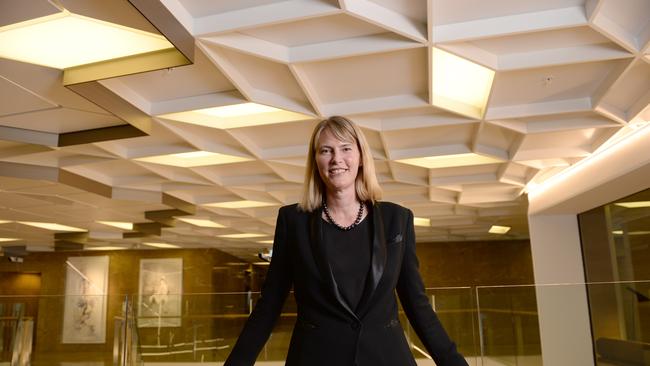ANZ to be the vanguard of tech innovation with ANZ Plus

If they succeed it will be a truly giant leap for a bank with technology that Elliott has described as Victorian (and he does not mean the state) to being ahead of big bank innovation leader CBA.
Success will also help write Maile Carnegie’s ticket to the top. Carnegie’s previous role as head of digital put her in pole position for retail. “Once we have something coming out of the ground and going into market in ANZ Plus, it’s time to bring the retail business back together under one leader. Maile is the right person to do that” Elliott tells The Australian.
Carnegie calls it a fundamental rewiring and building of the underlying bank platform.
Starting with savings and transaction accounts, ANZ Plus gives customers a new level of understanding and control of their money. The app brings on-boarding of new customers down from three days to three minutes.
Customers, 3000 so far, can categorise spending into essentials or groceries or other discretionary; they can tab items as tax deductible or for the kids; and they can split savings into pools for a house or a holiday.
“People all of a sudden get a window into their spending that they have never had before” says Carnegie. Another hot offering being tested is salary flow, where customers can direct salary to paying expenses or to savings buckets.
A chart comparing the ANZ Plus features with Commonwealth Bank appears to leave CBA for dead in sign up, security, money management and support. But this implies that Australia’s biggest bank has stood still on innovation.
“Obviously, we don’t know what they are doing, they are a fantastic competitor,” says Carnegie. “They are clearly going to keep moving, but as long as we keep investing in the platform and building the products on top of it, I am very confident.”
Over 100 new features will be added in the next few months, including real-time expense predictions and the ability to see which merchants have your card on file.
Elliott and Carnegie are targeting savers, not spenders. To understand the difference, imagine you were given $1000. If your instant urge is to splurge on shoes, you are a spender. If instead you want to pay down debt or add to savings, you are a saver.
Australians are split 50/50, but Elliott says savers control 75 per cent of the financial assets.
From July onwards, 2.5 million of the bank’s six million customers, who only have savings and transaction accounts, will be migrated across to ANZ Plus.
The pitch from Elliott and Carnegie to reset the bank is bold. It has to be. ANZ’s performance has been underwhelming, particularly on mortgages where it lost market share during Covid. Elliott says the bank was in no position to jump early on a tech fix. It had half the mortgage market share of CBA, with 20 per cent of bank capital dedicated to non-core businesses. “We couldn’t do what we were doing today if we’d built it on sand, it would have been a disaster.”
He says the bank has moved from a tech stack that was inflexible and extremely costly to a platform with a modular approach that can change with shifting demands. “We are going to be 30 per cent more efficient in back office and lead to a 45 per cent reduction in complaints,” he says.
Mortgages, the largest revenue generator for the bank, will move to the platform next year.
“We are on track and targeting to get closed and controlled testing out by the end of the year. At the moment, that is where you pretty much make or break, in the mortgage book,” says Carnegie.
Carnegie says the mortgage offering will lead the competition. “Banks do not have an underlying platform to deliver the backbone that supports their products in a completely digital and contemporary way. They still need to throw hordes of people to solve their problem,” she says.
There is a lot of emphasis on financial wellbeing in this pitch, which is welcome given the dearth of financial advice. But does financial wellbeing matter as much to customers as “time to yes” for a mortgage and how will performance be measured?
Carnegie says yes, once the issue is brought to life, and growth in market share will follow. Twelve-month targets to assess progress will be announced at the bank’s half-year results.
Carnegie’s goals are longer. “Most people do this job about three years. For me in three years’ time, what need to happen is that we are seeing our share growth, our NPS and consumer result through the roof. And that you can genuinely make the claim that if you bank with ANZ, you will have better financial wellbeing than if you don’t.”



ANZ chief Shayne Elliott and his new retail head Maile Carnegie served up quite a pitch to analysts and media on Wednesday – to put ANZ at the vanguard of tech innovation with ANZ Plus.